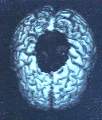
Sensory cortical areas transform sensor readings into another set of variables. These have persistent meaning with regard to the interpretation of the input, and the prediction of the evolution of the world. The activities of neurons in higher cortical areas for example represent the color of an object, the position of a target or the motion of the self, and thus are directly relevant to the interpretation and prediction of the world and thus could function as the basis of rational decisions and cognition. Sensor readings, on their own (e.g. the brightness of the light at the position of one retinal cone), do not have those higher order meanings. Early sensory areas convert a set of variables that each have no cognitive meaning into a set of variables that are directly relevant for the task encountered.
I build artificial systems that learn transformations. These transformations should also have the property that the outputs allow interpretation and prediction and are a set of relevant variables. The tricky part is how to translate these concepts into mathematical formula. Motion detectors for example seem to make sense to us human observers, and so do color detectors but as soon as it comes to higher order detectors understanding the goals of the system seems very difficult.
I use variants of SFA (Wiskott and Sejnowski), ISA (Hyvarinen and Hoyer) and coherent infomax (Becker and Hinton) to quantify these properties.